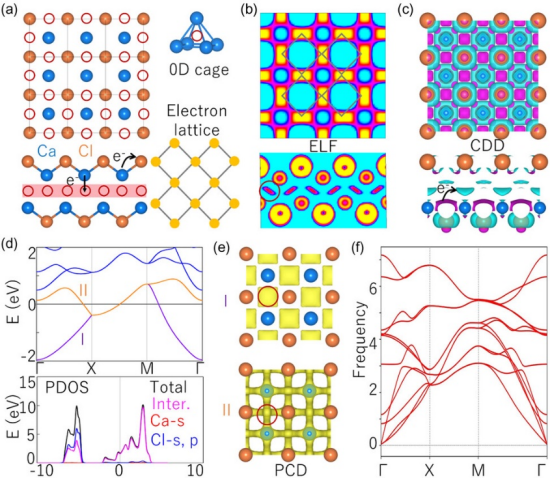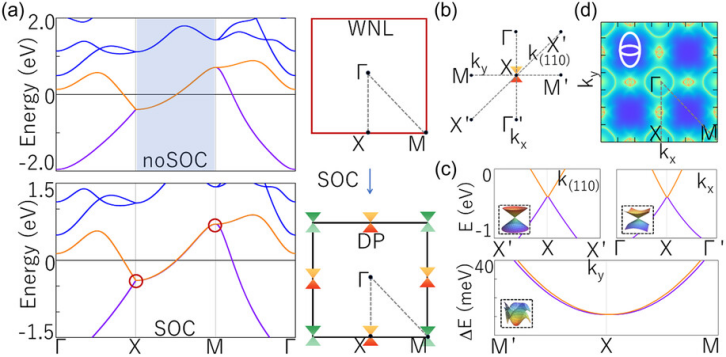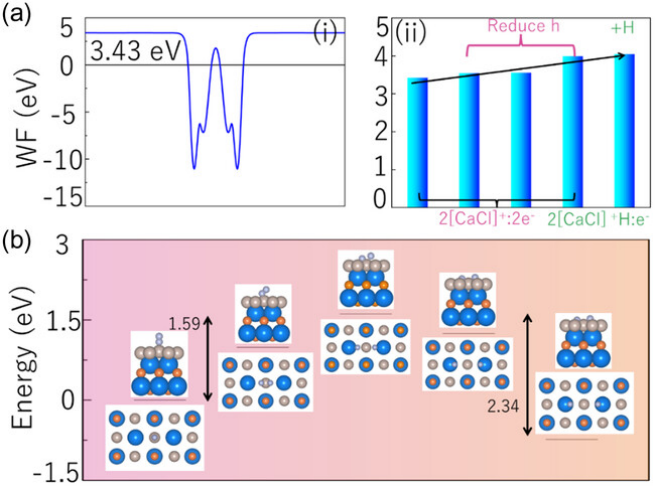
Since the discovery of graphene, a series of interesting physical properties have been closely related to its K point Dirac states. Subsequently, many two-dimensional Dirac semimetals have been identified both theoretically and experimentally. However, in most two-dimensional materials, Dirac states open different energy gaps under spin-orbit coupling (SOC) , which greatly weakens the related physical effects caused by Dirac states. In recent years, researchers have found that interstitial electrons in inorganic electronic compounds, due to exhibiting characteristics of nearly no nuclear binding, can easily realize different types of topological material states near the Fermi surface. Moreover, compared to conventional materials, inorganic electronic compounds display rich and fascinating physical and chemical properties, such as low work function, high electron mobility, and efficient catalytic activity. Therefore, realizing SOC-Dirac states in inorganic electronic compounds is of great research significance.
Recently, Dr. Meng Weizhen from Hebei Normal University, in collaboration with University of Wollongong‘s Wang Xiaotian and Cheng Zhenxiang have realized the SOC-Dirac state in the layered inorganic electronic compound CaCl, exhibiting excellent N2 cleavage performance.
Through valence state analysis, electron localization function, charge differential density, and partial charge density, it has been confirmed that CaCl belongs to a typical zero-dimensional inorganic electronic compound. The phonon spectrum further verifies that the CaCl with a tetragonal structure can stably exist, as shown in Figure 1.

Figure 1 (a) Crystal cell structure of CaCl.(b) Electron localization function (ELF) of CaCl.(c) Charge differential density (CDD) of CaCl.(d) Electronic structure and density of states of CaCl.(e) Charge density distribution of bands I and II in CaCl.(f) Phonon spectrum of CaCl.
Once considering SOC, due to the presence of nonsymmorphic symmetry, fourfold degenerate points, i.e., Dirac states, must form at the X and M points. Moreover, in the kx and ky directions, this Dirac state exhibits linear and quadratic dispersion, showing high anisotropy, as shown in Figure 2.

Figure 2 (a) Electronic band structure of CaCl considering SOC and not considering SOC.(b) and (e) Dispersion bands of Dirac states along k(110), kx, and ky directions.(d) Morphology of the Fermi surface near the Dirac states.
CaCl exhibits a low work function (3.43 eV). By modulating the interlayer spacing and hydrogenation, it was found that the low work function in CaCl is closely related to the presence of interstitial electrons. Furthermore, when CaCl is loaded with Ru metal, the strong electron-donating properties of CaCl greatly reduce the cleavage barrier of N2, as shown in Figure 3.

Figure 3 (a)-(i) Work function of CaCl.(ii) The curve relationship between interstitial electrons and work function derived by reducing interlayer spacing and hydrogenation.(b) Cleavage process and related barrier of N2 on the CaCl/Ru surface.
Paper Information:
Zero-Dimensional Interstitial Electron-Induced Spin–Orbit Coupling Dirac States in Sandwich Electride
Weizhen Meng, Jiayu Jiang, Yalong Jiao, Fengxian Ma, Ying Yang, Zhenxiang Cheng*, Xiaotian Wang*
Small Science
DOI: 10.1002/smsc.202400131
Click the lower left corner 「Read Original」 to view the original paper.
